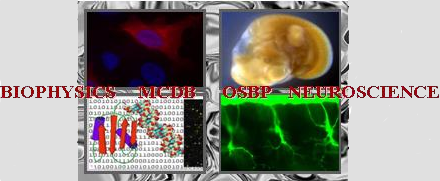Poster abstracts
Poster number 101 submitted by Jenny Le
Probing Nucleosome Stability with DNA Origami Calipers
Jenny V. Le (Interdisciplinary Biophysics Graduate Program), Yi Luo (Interdisciplinary Biophysics Graduate Program), Michael A. Darcy (Department of Physics, OSU), Christopher R. Lucas (Department of Mechanical and Aerospace Engineering, OSU), Michael G. Poirier (Department of Physics, OSU), Carlos E. Castro (Department of Mechanical and Aerospace Engineering, OSU)
Abstract:
While biophysical tools such as single molecule fluorescence and force spectroscopy have been used to study the structural dynamics of individual nucleosomes or large chromatin assemblies, it is challenging to probe conformational dynamics of gene regulation in the 10-100nm range. This is the length scale of genomic critical features, including promoter regions that span several nucleosomes. Our work aims to develop DNA origami tools to probe these mesoscale structure and dynamics of nucleosome arrays and chromatin. DNA origami itself is an emerging nanotechnology that enables the self-assembly of precisely designed molecular-scale structures. Here, we implement a DNA origami hinge device with the length scale of ~100nm as a nanocaliper to study the structure and dynamics of a single nucleosome as proof-of-concept.
The measurement capabilities of the device were calibrated by integrating DNA duplexes of varying lengths between the hinge arms to demonstrate the use the hinge angular distribution as a readout for the sample size attached between the arms. We further integrated single nucleosomes with varying but symmetric lengths of DNA linkers (i.e. DNA extending out after wrapping around the histone core) to verify our ability to detect structural changes in nucleosomes. Our immediate goal is to measure the structural changes in single nucleosomes and nucleosome arrays in response to transcription factor (TF) binding. Initial experiments using the nucleosome-caliper construct with GAL4-VP16, a hybrid transcription factor capable of highly-efficient transcription activation, shows that the angular distribution broadens as a result of increasing TF concentrations. Our measurements revealed a dissociation constant in the range of 1-10nM, which agrees with bulk measurements.
These results demonstrate the potential of a DNA origami device probing chromatin structure and function in vitro, in particular, the ability to measure structural changes in the range of 10-100nm.
Keywords: nucleosomes, structural dynamics, DNA origami
